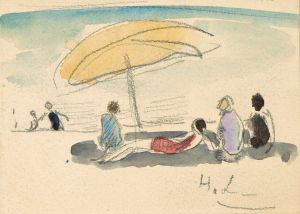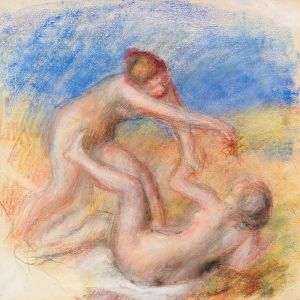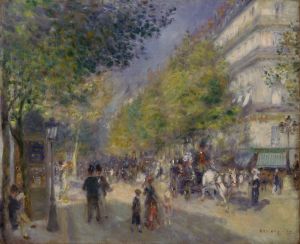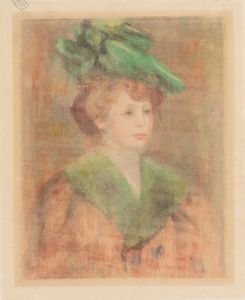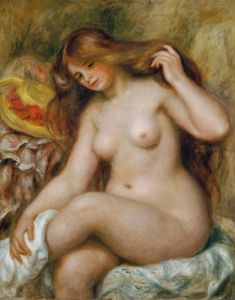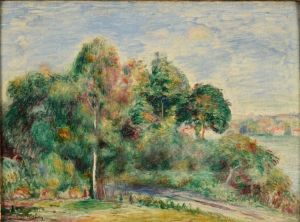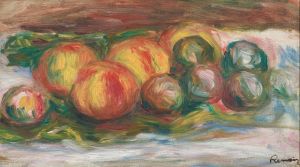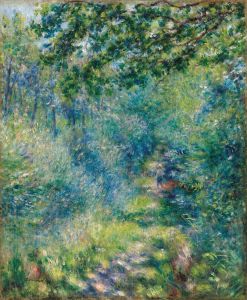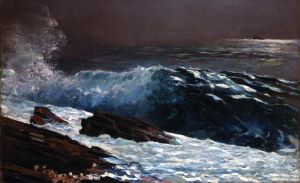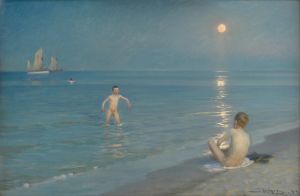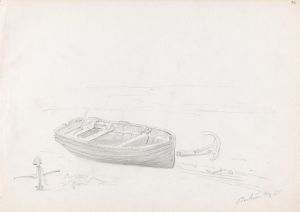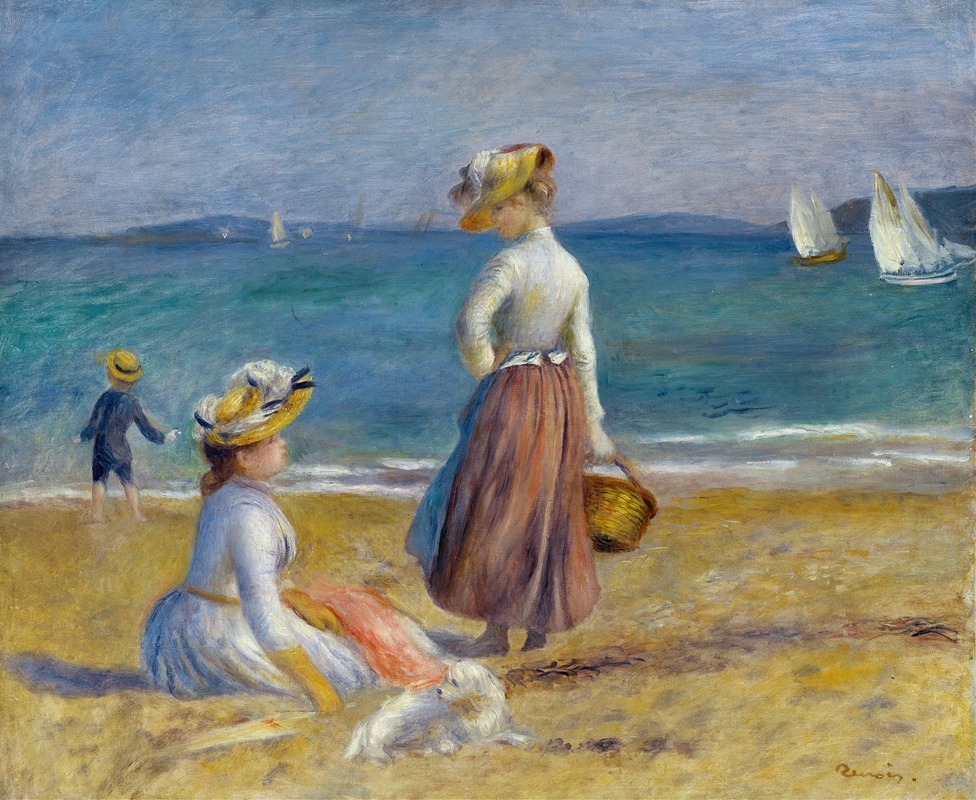
Figures on the Beach
A hand-painted replica of Pierre-Auguste Renoir’s masterpiece Figures on the Beach, meticulously crafted by professional artists to capture the true essence of the original. Each piece is created with museum-quality canvas and rare mineral pigments, carefully painted by experienced artists with delicate brushstrokes and rich, layered colors to perfectly recreate the texture of the original artwork. Unlike machine-printed reproductions, this hand-painted version brings the painting to life, infused with the artist’s emotions and skill in every stroke. Whether for personal collection or home decoration, it instantly elevates the artistic atmosphere of any space.
"Figures on the Beach" by Pierre-Auguste Renoir is a painting that exemplifies the Impressionist style, characterized by its vibrant use of color and light. Renoir, a prominent French artist, was a leading figure in the Impressionist movement, which emerged in the late 19th century. This movement sought to capture the fleeting effects of light and atmosphere, often focusing on scenes of everyday life.
Renoir was known for his depictions of leisure activities, and "Figures on the Beach" is a testament to his fascination with the human form and outdoor settings. The painting showcases a group of figures enjoying a day at the beach, a subject that was popular among Impressionist artists who were interested in modern life and the changing social dynamics of their time.
The composition of "Figures on the Beach" reflects Renoir's mastery in portraying the human figure in a natural setting. The figures are depicted in various poses, some reclining, others standing or walking, each absorbed in their own activities. Renoir's brushwork is loose and fluid, capturing the movement of the figures and the shimmering quality of sunlight on sand and water. The palette is bright and lively, with blues, whites, and flesh tones dominating the canvas, evoking the warmth and leisure of a summer day.
Renoir's technique in this painting is indicative of his broader artistic approach. He often employed a method of applying paint in small, quick strokes, which allowed him to convey the effects of light and shadow with immediacy and vibrancy. This technique is evident in "Figures on the Beach," where the play of light across the figures and the landscape is rendered with a sense of spontaneity and freshness.
The setting of the beach itself is significant, as it reflects the growing popularity of seaside resorts in the late 19th century. During this period, the beach became a symbol of leisure and relaxation, accessible to a broader segment of society due to advancements in transportation and changes in social norms. Renoir's depiction of this scene captures the essence of this cultural shift, highlighting the joy and freedom associated with such leisure activities.
Renoir's interest in the human form is also a central theme in "Figures on the Beach." He had a lifelong fascination with the beauty of the human body, often exploring this theme in his work. In this painting, the figures are rendered with a softness and sensuality that is characteristic of Renoir's style. His ability to convey the subtleties of human interaction and emotion is evident in the relaxed and intimate poses of the figures.
"Figures on the Beach" is a reflection of Renoir's broader artistic goals, which included capturing the beauty of the world around him and the pleasures of everyday life. His work continues to be celebrated for its ability to convey the joy and vibrancy of the human experience, and "Figures on the Beach" is a prime example of his skill in doing so.
Overall, "Figures on the Beach" is a quintessential example of Renoir's Impressionist style, showcasing his talent for capturing light, color, and the human form in a way that is both immediate and timeless. The painting remains an important work within Renoir's oeuvre and continues to be appreciated for its beauty and historical significance.





